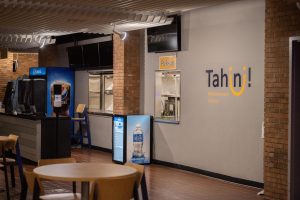Effects of protesting still felt today at Kent State
May 4, 2016
Protesting was a major contributor to the events that began on May 1, 1970, at Kent State. Protesting is a right all citizens in the United States possess to publicly share their voices. However, protesting has changed on Kent State’s campus since the events that took place May 4, 1970.
“Back in the early 70s, the police weren’t really well-prepared or well-trained in responding to disturbances, there was a lot less riot control, there was a lot less training on how to manage those events,” said Bill Buckbee, assistant chief of police for Kent State University. “I think the key is much better training, much better leadership, and an attitude of cooperation with the protestors.”
Although protests still take place on Kent State’s campus, they are much smaller and historically less chaotic in comparison to the protests that took place on May 4, 1970.
Not all protests are usually peaceful, the protests during that weekend in 1970 turned violent.
“Events quickly escalated into a violent confrontation between protestors and local police,” according to the website on May 4 written by Professor Jerry Lewis. “Bonfires were built in the streets of downtown Kent, cars were stopped, police cars were hit with bottles, and some store windows were broken. The entire Kent police force was called to duty as well as officers from the county and surrounding communities.”
Since 1970, Kent State has allowed students to continue to express their rights of free speech and protest on issues they feel passionate about.
“Our position is as long as they follow the rules, and they comply with the law, they have a right to do what their doing and were very tolerate of it,” Buckabee said.












